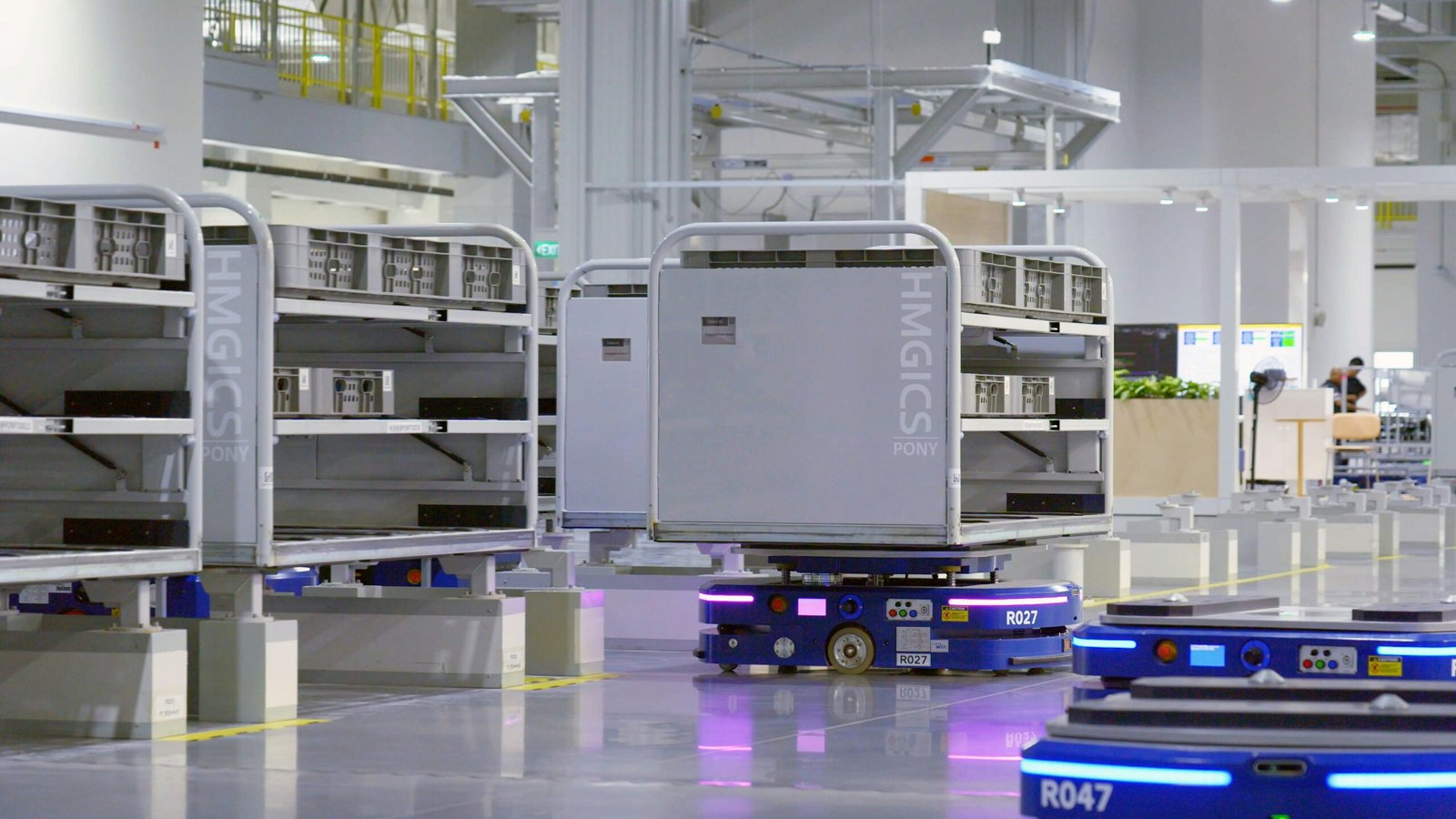
Introduction to AI in Business
Artificial Intelligence (AI) has emerged as a technological cornerstone, significantly altering the landscape of modern business practices. As industries evolve, the integration of AI systems represents a fundamental shift towards improving operational efficiency and promoting innovative solutions across various sectors. Businesses worldwide increasingly employ AI technologies to streamline operations, enabling organizations to function more effectively while reducing overhead costs.
The application of AI within business paradigm encompasses diverse functions, including but not limited to, chatbots for customer service, predictive analytics for market trends, and automated processes that enhance productivity. By harnessing the potential of AI, businesses can analyze vast datasets to derive insights that inform strategic decisions, thus promoting more accurate forecasts and optimized resource allocation. Such automation not only accelerates workflows but also minimizes the likelihood of human error, leading to a more reliable operational environment.
Furthermore, AI has the capacity to personalize customer interactions, tailoring services to meet individual preferences and needs. Chatbots, for instance, are increasingly employed in customer service roles, providing real-time responses and consistently enhancing user experience. This level of automation mitigates wait times and improves customer satisfaction, establishing a competitive edge in a crowded marketplace.
As organizations recognize the importance of adopting AI-driven solutions, the dialogue surrounding the future of work and efficiency continues to evolve. The transition into an AI-integrated business model not only enhances productivity but also positions companies at the forefront of innovation, prompting a culture of continuous improvement. This dynamic shift in the business landscape illustrates the transformative potential of AI, illustrating how it is revolutionizing industries and redefining operational standards to meet the challenges of a rapidly changing environment.
Understanding Automation and Its Impact
Automation, in the business context, refers to the use of technology to perform tasks with minimal human intervention. Companies are increasingly adopting automation to enhance operational efficiency, reduce costs, and improve accuracy. The advent of artificial intelligence (AI) has significantly propelled this trend, with various industries embracing automated systems to revolutionize their processes. A key driver of automation is the need for businesses to streamline operations amidst ever-growing competition and consumer demand.
Automation trends encompass a wide range of implementations, from robotic process automation (RPA) in administrative tasks to the deployment of chatbots for customer service. As organizations strive for enhanced productivity, they are leveraging AI-driven solutions that can process complex data and execute repetitive tasks with remarkable speed and precision. This shift toward automation enables businesses to allocate human resources to more strategic functions, maximizing workforce capability while minimizing mundane tasks.
Various types of tasks are being automated across sectors, including data entry, transaction processing, and even advanced analytical functions powered by predictive analytics. By integrating these automation technologies, businesses enhance their operational workflows and achieve higher throughput. Moreover, the impact of automation on workforce dynamics cannot be overlooked. While there may be initial concerns regarding job displacement, the reality is that automation often leads to the creation of new opportunities. Employees can engage in more creative and fulfilling work that requires cognitive skills and emotional intelligence, thus fostering a more innovative workplace environment.
In summary, understanding the role of automation in business is crucial as it heralds a new era of efficiency and effectiveness. The synergistic relationship between AI and automation not only modifies existing job roles but also challenges organizations to adapt to an evolving landscape, all while revolutionizing industries through intelligent deployment of technology.
The Rise of Chatbots in Customer Service
Chatbots have emerged as a transformative tool in customer service, fundamentally changing how businesses interact with their clients. These AI-powered systems are designed to simulate conversation and can be integrated into various communication channels such as websites, messaging apps, and social media platforms. By utilizing natural language processing (NLP) and machine learning algorithms, chatbots can understand customer inquiries, provide instant responses, and continuously improve their service based on interaction patterns.
The applications of chatbots in business are extensive. They excel in handling common customer queries, thus freeing up human agents to focus on more complex issues. For instance, many companies have adopted chatbots to manage inquiries about order status, product information, and troubleshooting advice. This shift not only improves efficiency but also significantly enhances response times, leading to higher customer satisfaction rates. Automation through chatbots allows businesses to provide round-the-clock support, catering to customers across different time zones without the need for hiring additional staff.
Several organizations have successfully harnessed the power of chatbots to revolutionize their customer service strategy. For example, a leading airline company implemented a chatbot to assist passengers in booking flights, checking in, and addressing travel-related queries, which resulted in reduced wait times and increased overall customer engagement. Another noteworthy case is a global retail brand that uses predictive analytics within their chatbot system to anticipate customer needs based on past behavior, further enhancing the shopping experience.
As businesses increasingly recognize the potential of chatbots to drive efficiency and automation, these tools are predicted to become even more advanced. Their ability to facilitate smoother customer interactions is revolutionizing industries, positioning chatbots as a vital resource for companies aiming to maintain a competitive edge in a fast-paced digital landscape.
Predictive Analytics: Forecasting the Future
Predictive analytics is an advanced branch of data analysis that utilizes statistical algorithms and machine learning techniques to identify the likelihood of future outcomes based on historical data. Within the context of business intelligence, this practice has emerged as a vital tool for organizations aiming to enhance their decision-making process and overall operational efficiency. By harnessing the power of predictive analytics, businesses can dissect complex datasets to reveal patterns and trends that inform strategic initiatives.
The methodologies employed in predictive analytics vary widely, but they generally involve approaches such as regression analysis, time-series analysis, and machine learning algorithms. These techniques enable companies to analyze key performance indicators and market conditions, thereby allowing them to forecast future trends with greater accuracy. Businesses leverage predictive analytics to anticipate customer needs, streamline operations, and assess the potential impacts of varying business scenarios, ultimately leading to improved customer satisfaction and loyalty.
A prime example of predictive analytics in action can be observed in the retail industry. Numerous retailers utilize this technology to analyze consumer purchasing behavior, which aids in inventory management and sales optimization. For instance, by utilizing predictive models, a company can determine which products are likely to experience increased demand during specific seasons, thus facilitating better stock management and reducing waste. Similarly, businesses in the financial sector employ predictive analytics to assess risk levels and create more effective loan offerings, enhancing their overall operational performance.
In an era where business operations are increasingly driven by data, predictive analytics has proven to be a powerful lever for driving efficiency and innovation. Organizations that fully embrace this technology often find themselves at a competitive advantage, able to make informed decisions that facilitate growth and adaptability in an ever-changing market landscape.
AI-Driven Decision Making
The integration of artificial intelligence (AI) into business processes has significantly transformed decision-making frameworks across various industries. AI algorithms possess the remarkable ability to analyze vast datasets with speed and accuracy that surpass human capabilities. By leveraging these algorithms, organizations can gather insights from data, facilitate evidence-based decisions, and enhance overall efficiency.
Machine learning, a subset of AI, plays a pivotal role in identifying patterns within complex datasets. By continuously learning from new information, machine learning models can improve their predictive capabilities, allowing businesses to anticipate trends and shifts in consumer behavior. This capacity to learn and adapt enables organizations to make informed decisions that align with market demands, thus fostering a more proactive approach in strategic planning.
Moreover, AI tools are instrumental in supporting business leaders during the risk assessment process. By integrating predictive analytics into their decision-making models, organizations can better understand potential risks and opportunities associated with various scenarios. This foresight empowers leaders to devise strategies that mitigate risks while capitalizing on favorable conditions, ultimately driving business growth and sustainability.
In addition to improving operational efficiency, AI-driven decision-making also enhances collaboration within teams. AI tools can provide individuals with real-time access to relevant data, allowing for more informed discussions and collaborative problem-solving. As AI continues to evolve, its impact on decision-making processes will only strengthen, making it an invaluable asset for organizations striving to remain competitive in a rapidly changing landscape.
Ultimately, the incorporation of AI in decision-making is revolutionizing the way businesses operate, fostering an environment where data-driven insights empower leaders and teams to navigate the complexities of their respective markets.
Transforming Supply Chain Management with AI
The advent of artificial intelligence (AI) is significantly reshaping supply chain management, offering unprecedented opportunities for enhancing efficiency and automation. Businesses are increasingly leveraging AI technologies to optimize their inventory control systems, which is vital for minimizing excess stock and ensuring that products are available when needed. By employing machine learning algorithms, companies can analyze historical sales data, identify trends and patterns, and make informed decisions regarding stock levels. This proactive inventory management not only reduces holding costs but also improves cash flow.
Moreover, AI plays a crucial role in enhancing logistics and distribution processes. The integration of AI-powered chatbots into logistics operations facilitates real-time communication and problem-solving. These virtual assistants can handle inquiries, track shipments, and provide updates, thus improving stakeholder engagement and satisfaction. Additionally, predictive analytics, an AI subset, enables organizations to optimize routing and scheduling, thereby reducing delivery times and operational costs. This level of automation in logistics helps businesses meet customer demand more efficiently while minimizing delays.
Furthermore, AI’s ability to forecast demand with greater accuracy is transforming how businesses plan their operations. By analyzing vast amounts of data, including market trends, consumer behavior, and external factors such as seasonal changes or economic shifts, AI can provide insights that were previously unattainable. This data-driven approach allows businesses to adapt their supply chain strategies proactively, ensuring they can respond effectively to fluctuations in demand. Ultimately, the integration of AI in supply chain management not only drives efficiency but also contributes to a significant reduction in costs, positioning businesses to thrive in an increasingly competitive landscape.
Challenges and Considerations in Implementing AI
The integration of artificial intelligence (AI) in business has become increasingly prolific, yet it does not come without its challenges. Businesses aiming to embrace these advanced technologies must navigate a myriad of obstacles, which can complicate the journey toward improved efficiency and automation. One significant challenge is data privacy. As organizations harness vast amounts of data to train AI algorithms, ensuring that this data is collected and utilized ethically is paramount. Violations can lead to severe repercussions, including legal ramifications and damage to reputation. Proper measures must be taken to secure user data, enhancing trust and compliance with regulations such as GDPR.
Another area of concern is workforce displacement. AI systems, including chatbots and predictive analytics tools, can automate routine tasks that were previously handled by human employees. While this can lead to increased efficiency, it also raises the issue of job security for many workers. Businesses must carefully consider strategies for re-skilling their workforce to adapt to these changes, ensuring that they remain competitive in a rapidly evolving environment while minimizing social backlash.
Furthermore, integrating AI technologies with legacy systems can pose a significant hurdle for many businesses. Older infrastructure may not be compatible with the latest AI solutions, leading to integration challenges that can diminish the anticipated benefits of automation. It is crucial for organizations to conduct thorough assessments and plan for gradual transitions that incorporate both new technologies and existing systems effectively.
Lastly, ethical considerations surrounding AI must not be overlooked. As AI continues to transform various industries, it is essential for businesses to formulate guidelines that govern the ethical use of these technologies. Addressing biases in AI algorithms and ensuring transparency in decision-making processes are critical components of responsible AI implementation. Failure to address these challenges can hinder the goal of revolutionizing industries sustained by automation and efficiency.
The Future of AI in Business
As we look ahead, the landscape of artificial intelligence (AI) in business is poised for transformative advancements that will continue to revolutionize industries. The integration of AI technologies such as automation, predictive analytics, and intelligent chatbots is expected to deepen, fostering enhanced efficiency and productivity across various sectors. Companies are beginning to recognize the potential of AI not just as a tool for automation, but as a catalyst for innovative business models and strategies.
One emerging trend is the increased adoption of machine learning algorithms, which allow organizations to analyze vast amounts of data and derive actionable insights. As these algorithms evolve, we can anticipate a shift towards more personalized customer experiences and tailored marketing strategies. This capability will empower businesses to engage their customers in meaningful ways, providing not only products but also customized solutions which cater to individual needs.
Moreover, AI’s potential applications in real-time decision-making present an exciting horizon for various industries such as healthcare, finance, and retail. For instance, predictive analytics can enhance risk management by analyzing market trends and consumer behavior, thereby facilitating informed strategic planning. In the healthcare sector, AI could streamline operations by enabling precise diagnoses and improving patient care through data-driven insights.
To prepare for this ongoing AI integration, businesses must prioritize investment in technologies that facilitate automation and enhance operational efficacy. This includes not only adopting AI tools but also training employees to work alongside these systems effectively. Emphasizing a culture of continuous learning will be crucial in maximizing the benefits that AI can bring to an organization.
The future of AI in business promises to be dynamic, influenced by ongoing technological innovations and the increasing demand for efficiency. Businesses that are proactive in embracing these advancements will be better positioned to lead in an ever-evolving marketplace.
Conclusion: Embracing AI for Competitive Advantage
As we have explored throughout this blog post, the integration of artificial intelligence in business is not merely a trend but a fundamental shift that is revolutionizing industries across various sectors. The adoption of AI technologies, such as chatbots and predictive analytics, empowers organizations to enhance their operational efficiency and drive significant business outcomes. Companies that harness the potential of AI can automate tedious tasks, optimize workflows, and make data-driven decisions, thereby positioning themselves advantageously in an increasingly competitive landscape.
The benefits of embracing AI are multifaceted. First and foremost, automation facilitates the streamlining of processes, allowing businesses to allocate resources more effectively and reduce operational costs. This efficiency translates into quicker response times and improved customer experiences, essential factors for thriving in today’s market. Furthermore, AI-driven predictive analytics equips organizations with insights that enable proactive decision-making, ensuring they stay ahead of industry trends and customer needs.
Additionally, the rise of chatbots has transformed customer service by providing instant access to information and support. This technology not only enhances customer satisfaction but also frees up human capital to focus on strategic initiatives, fostering innovation within the company. Given these advantages, it is imperative for business leaders to recognize that adopting AI is no longer optional; it is a necessity in achieving sustainable growth and remaining competitive.
In conclusion, by embracing AI technologies, businesses can not only improve their operational efficiencies but also create a robust framework for future success. As the landscape continues to evolve, those who proactively integrate AI into their operations will be better equipped to navigate challenges and seize emerging opportunities, ultimately securing a competitive edge in their respective industries.
- Name: Mohit Anand
- Phone Number: +91-9835131568(Sumit Singh)
- Email ID: teamemancipation@gmail.com
- Our Platforms:
- Digilearn Cloud
- EEPL Test
- Live Emancipation
- Follow Us on Social Media:
- Instagram – EEPL Classroom
- Facebook – EEPL Classroom
- Go back to google
Internal links




